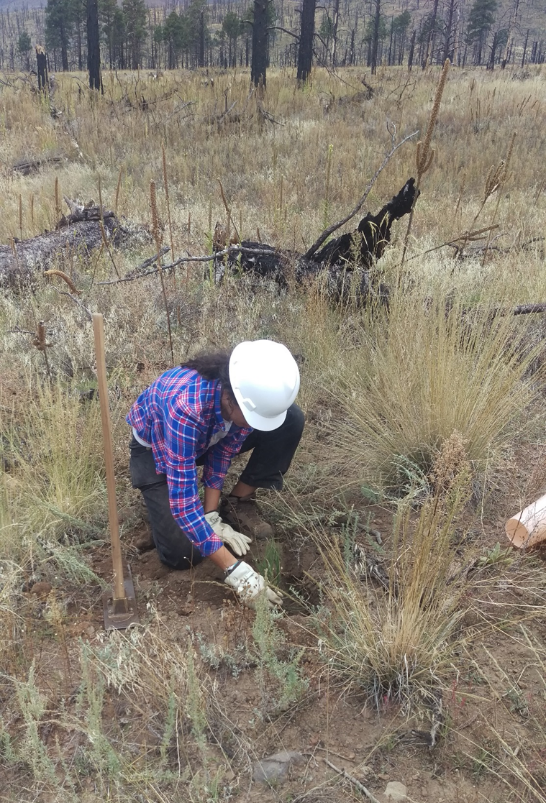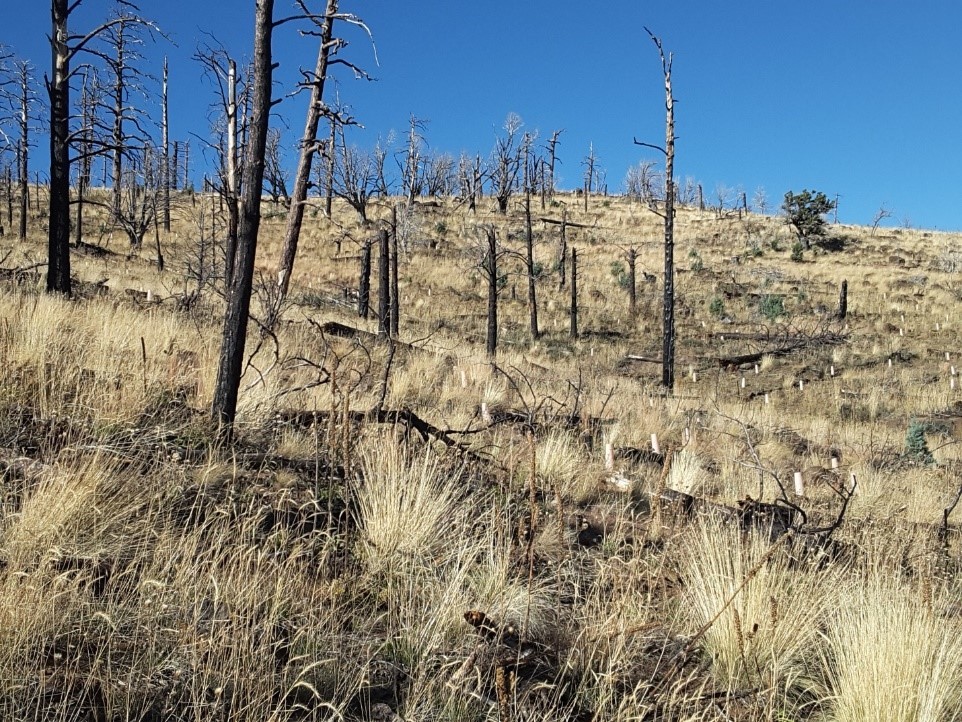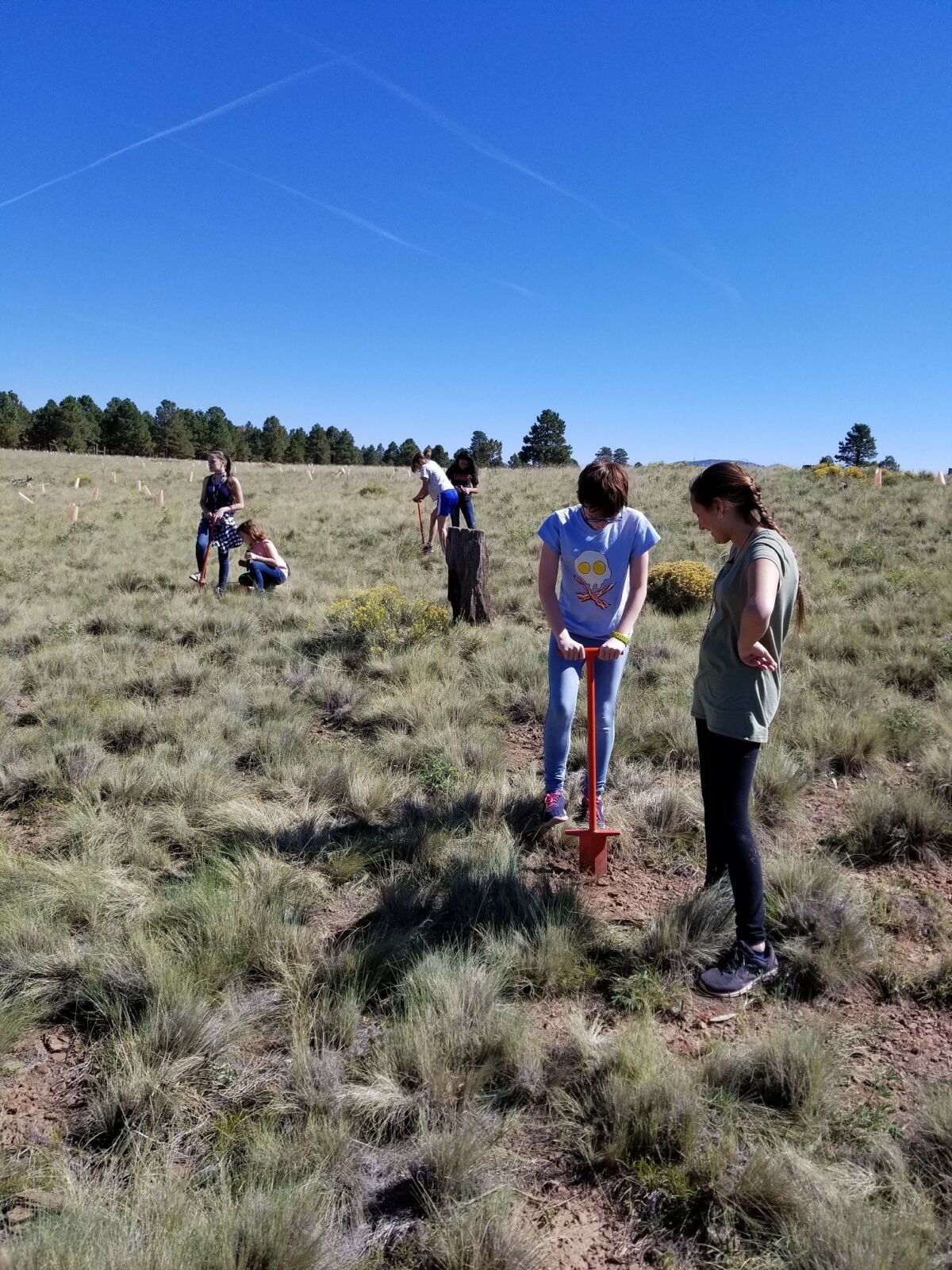Surrounding the college town of Flagstaff, Arizona, and just a day trip from Grand Canyon National Park, Coconino National Forest welcomes millions of visitors each year to its red rock canyons, lakes and swimming holes, and tall ponderosa pine forests. Coconino’s diverse landscapes also include alpine tundra and desert, plus a unique geological attraction, the Mogollon Rim, an escarpment – or steep cliff – that forms the southwestern border of the Colorado Plateau.
Since the late 1980s, the northern portion of the forest encompassing the Flagstaff Ranger District has experienced over a dozen high intensity fires. The fires have cleared entire stands, removing the local seed source and leaving deep burn scars in their wake. Post-fire monsoon rains, like those following the 2010 Schultz Fire, have further hampered natural regeneration, as the heavy rains caused debris flows and erosion on the already stripped lands.

An NAU forestry student plants a seedling (Photo by Mark Nabel)
Fire recovery and forest restoration is important to the local community, as many of the fires occurred in close proximity to town and local voters recently passed a multimillion-dollar bond to increase forest health. In an effort to involve the local community, our tree-planting partners at the Forest Service began working with the School of Forestry at Northern Arizona University (NAU) on a community-based reforestation partnership in 2018. The partnership utilizes the volunteer power of NAU interns, researchers and local schoolchildren to plant thousands of trees on wildfire-affected areas of the National Forest.
The school children are from the School of Forestry’s EcoKids program, which uses art and nature to connect students with others from around the world through a global partner network. Since the partnership began, hundreds of middle school and high school volunteers from EcoKids have planted approximately 7,000 seedlings annually. The students also act as citizen scientists, looking into concepts ranging from climate change to pollination.
The remaining seedlings are planted by the NAU team and the Forest Service’s planting crews. The seedlings planted are native ponderosa pine, grown locally at the NAU nursery. The partnership is beneficial for both the National Forest and the Forest Service, as the NAU team conducts research on effective ponderosa pine propagation and monitors the seedlings following the plantings, thus ensuring a high survivorship.

(Photo by Alex Lundquist)
The partnership provides an opportunity for local participation and connection across multiple groups, with the added bonus of helping a National Forest that is literally in the community’s backyard. Additionally, enlisting the help of local children and the university in reforestation efforts helps foster an interest in the National Forest and in future restoration projects in the community. The partnership can also support stewardship and newfound connections to the forest, as the children who volunteer can return with family and friends with a sense of guardianship of the forest they helped replant.

Your support for our Reforestation Program supports projects like this.
Since 2013, the NFF has planted over 370,000 trees on nearly 3,000 acres of Coconino National Forest impacted by high severity fires. This work would not have been possible without the support of our donors and corporate tree-planting partners like the Salt River Project and Stryker’s Sustainability Solutions. Visit our Reforestation Program page to find out how you can join our generous donors and support tree planting!

